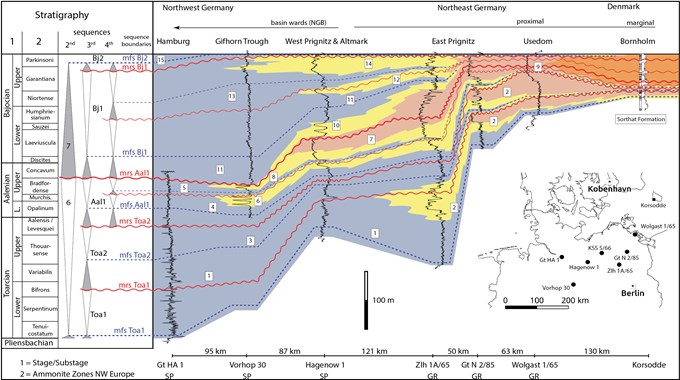Sequence Stratigraphy
GTN has more than 25 years of experience in geothermal exploration in the North German Basin and many other regions. The main aquifers in the North German Basin are open-pored sandstone horizons formed in the Mesozoic. In order to correlate and explore these sandstone horizons in different regions, the method of sequence stratigraphy is applied.
Detailed investigations by biostratigraphy, pollen and spore analysis led to the first high-resolution sequential stratigraphic model of the main aquifer systems in the North German Basin.

GTN’s long experience in the exploration of the main geothermal aquifers in the North German Basin results in a comprehensive stratigraphic and geological understanding. In order to build a robust and applicable sequence stratigraphic model, profound knowledge of the former sedimentation areas, biostratigraphy and architecture is essential.
Sequence stratigraphy investigates sedimentation in response to sea level changes and sedimentological patterns as a result of sedimentation rate and sedimentation space. Sequence stratigraphy is of enormous importance for geological reconstruction and greatly improves the prediction accuracy in geological exploration.
The principles of sequence stratigraphy are independent of the type and nature of the sedimentation area in a sedimentation basin and apply to both clastic and carbonate systems. Thus, sequence stratigraphy can be considered as a method to capture a depositional environment in 4D by combining cross-sections (stratigraphy), spatial reconstructions (geomorphology) and the development of depositional systems (sedimentary processes).
- Sequence stratigraphy of siliciclastic and carbonate systems
- Paleographic reconstructions
- Basin analysis
- Reservoir prospection
Sequence stratigraphy has enormous significance for geological reconstruction and greatly improves the accuracy of prediction in geological exploration